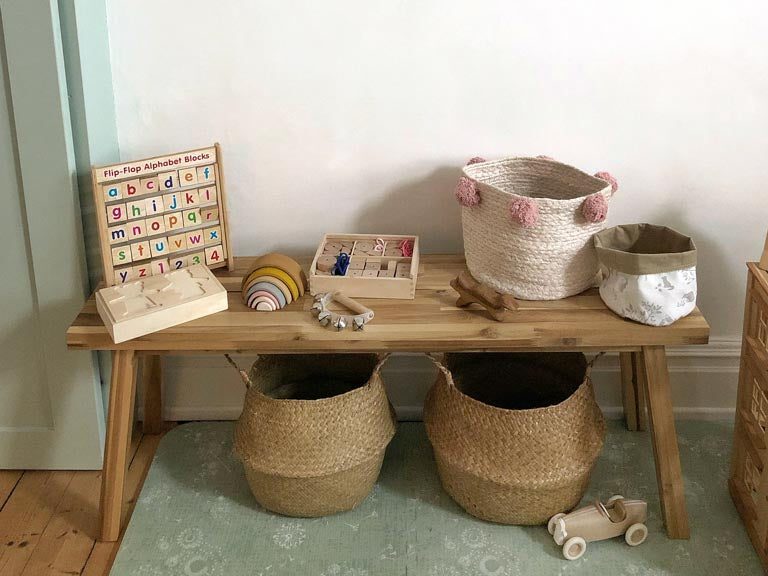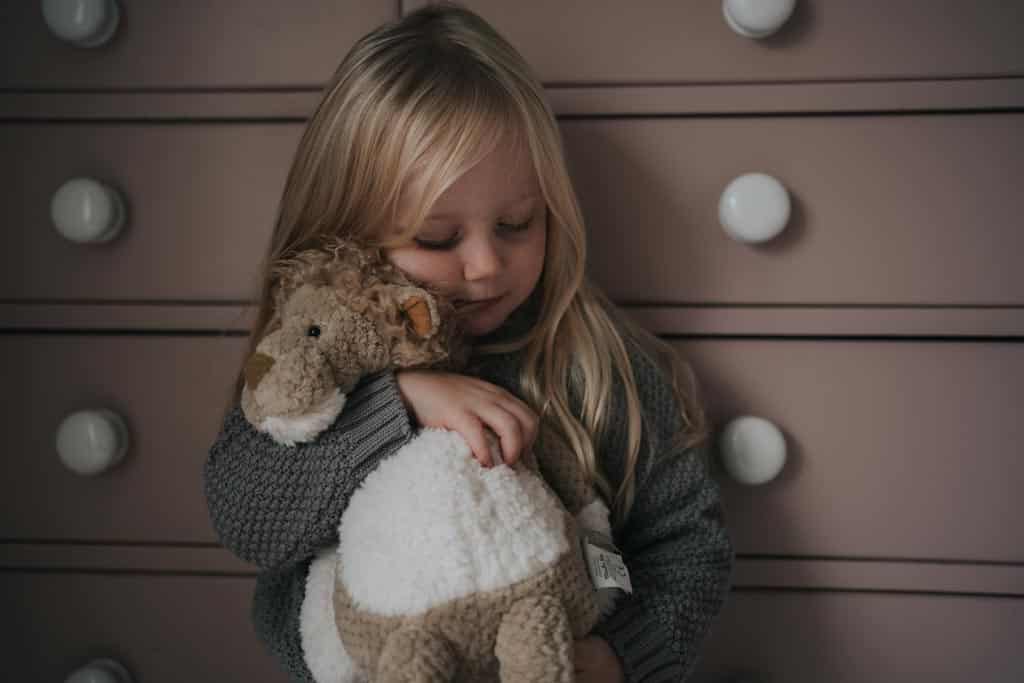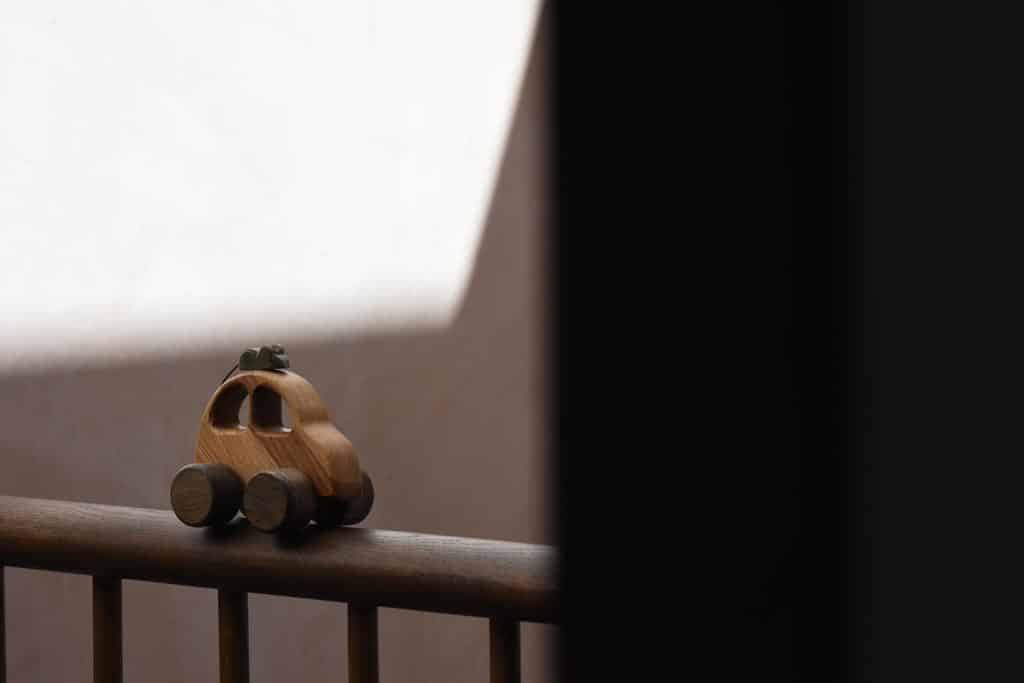It’s been exactly thirty minutes since my toddler started playing with non-Newtonian fluid.
I don’t remember a time when he played on his own for more than ten minutes. I think I’ve already done everything I had planned, and now I’m just watching him with undisguised admiration.
Yes, the non-Newtonian fluid is on his clothes, on the table, and on the chair, but none of that matters because I can see that he is absorbing this moment with every pore of his body.
He’s not just stirring his hand in a bowl filled with water and starch.
He is conducting a highly complex experiment.
He is learning the laws of physics.
He is analyzing them.
He is calculating.
He is experiencing them with his whole being, on multiple levels.
Right here, right now, in this very moment, he is competent, strong, focused, and going far beyond what might be expected.
This is pure development.
Why Independent Play Matters
There is no development without independence. We do not truly experience or learn when our field of action is limited. Under such conditions, we merely replicate someone else’s scenarios. However, development requires full immersion in a given situation. It involves experiencing setbacks. And in the case of children, we should rather speak of experiencing various consequences, as “failure” is merely a mental construct based on the assumption of a specific outcome. Children do not assume; they explore with their whole selves, absorbing every element of the experience. These are the true competencies of a genius—the perceptual and cognitive openness that remains elusive to us throughout our adult lives.
Independent play requires taking responsibility for the process. This means that the child decides how the play unfolds. If we want to encourage independent play, we should provide space for experiments and allow children to implement their own ideas and play scenarios.
Creativity is another crucial element of independent play. During independent and self-directed play, children interact with themselves. It is a kind of sparring session in which they test their understanding, memory, and reasoning. It’s a highly complex process with a lot happening at once. It’s like a dress rehearsal before a big performance. It is also an incredible tool for self-expression. Through independent play, children get to know themselves and test their abilities in new situations, making them better prepared and more confident.
We all understand that preparation is necessary for important conversations, exams, and life situations—this is exactly what children do during independent play. They prepare for situations that may arise or conduct thought experiments using the knowledge they have acquired.
Self-sufficiency is another key element and outcome of independent play. It is also a skill that results from gaining experience in a safe and relatively isolated environment. In playing alone and talking to themselves, children lay the groundwork for self-awareness and confidence.
Development. This is the ultimate skill and the stage to which independent play leads. There is no better or more effective way to initiate growth than this unique self-mapping process that independent play provides.

Choosing the Best Toys for Independent Play (5 examples)
The best toys for independent play are those that serve as tools used by adults and those that allow children to understand the rules and principles governing the world around them. Never forget that play is a form of learning for children, which is why they are naturally drawn to objects you use or those they see in your everyday life. This is an instinctive drive—we want to adapt and understand the world we live in. Observing and imitating adults is our species’ most effective learning strategy.
Objects That Imitate Adult Activities
Playing with kitchen utensils, engaging in pretend cooking, using items that parents frequently handle, pretending to be a mechanic, running a store, driving a bus or a car—these kinds of play are inherently more engaging to children than traditional “kids’ toys.”
Figures – Representations of Animals, People, and Objects
Children love reenacting scenes with characters they have some knowledge of. It’s beneficial to introduce topics in a structured way and to observe their sensitive periods. For instance, children who read about dinosaurs with their parents often recreate scenes using dinosaur figurines. You could say that spending fifteen minutes reading about a resourceful Diplodocus before bedtime will earn you fifteen minutes of quiet coffee time the next day while your toddler reenacts those stories with dinosaur figurines.
Children naturally want to understand how things work in reality. The more facts you provide, the more engaged they will be in playing with specific figures and reenacting known scenarios.
Explore topics together that interest your child. It might be vehicles, dinosaurs, insects, or animals.
Children who acquire knowledge about the world from cartoons will eventually treat cartoons as their primary source of information. The way a child plays can quickly reveal what their main learning medium is. It’s essential to balance screen time with real-world knowledge and hands-on experiences.
Children who have factual knowledge about the characters they play with are able to create more complex and flexible play scenarios. Often, they do this completely independently, naturally resonating with the facts that a parent has previously presented to them. This means they can focus on independent play for longer periods without needing direct parental involvement.
Through play, they process what their parents have introduced, suggested, explained, read, and discussed. This is not just an investment in a child’s development—it’s also an investment in a parent’s much-needed downtime.

Sensory and Creative Materials
Non-Newtonian fluids, playdough, various textures. Loose materials. Art supplies that can be combined into compositions. Stickers, homemade glue, and all sorts of paper elements—these are all essential for fostering agency and creativity in children.
Modular Toys
Anything that allows free building, rearranging, constructing, and disassembling. It’s best to start with open-ended blocks rather than permanently connected ones. The more open-ended the material, the more possibilities it offers, making it more accessible for inexperienced little hands.

Books and Albums
Illustrations depicting real-world representations or showing familiar objects in new contexts.
Children have an inherent thirst for knowledge—what we call curiosity. But this is simply a need to complete missing information. When we possess basic knowledge about a subject, we naturally seek to expand it. For children, observation and parental guidance are the primary sources of such knowledge. Books, especially picture albums featuring real-world images, provide a valuable extension of this learning process.
Children often revisit their favorite books, spending significant time immersed in them. And let’s be honest—this precious time is something every parent could use.
Setting Up the Right Play Environment
What is the key to creating the ideal setting for independent play? First, give your child the freedom to decide how they want to play. This may mean accepting some mess, disorder, or other inconveniences. But remember, if you truly want your child to engage in self-directed play without constant guidance, you must also respect their autonomy in this process.
This does not mean leaving the child unattended—absolutely not. But play will only be meaningful if it happens on the child’s terms, in a way they deem appropriate, while maintaining safety and under your watchful eye.

Encouraging Your Toddler to Play Independently
The best way to encourage independent play is to first provide your child with knowledge about a topic or satisfy their curiosity about something they currently find fascinating. Children instinctively process this information through play—it’s their method of data analysis: experimentation.
Second, give your child space for autonomy and decision-making.
We often expect children to play independently but simultaneously restrict them from doing so on their own terms.
The road to independence is long, but it requires parents to accept that direct control must give way to distant support.
Children want to feel a sense of agency and independence, but this cannot be achieved if their play is constantly regulated. More often than not, it’s not children who aren’t ready for independent play—it’s parents who struggle to accept the consequences of that independence.




